| Attribut | Einzelheiten |
|---|---|
| Notiz | Nehmen Sie vor dem Test zwei oder drei verschiedene Proben zur Vorhersage |
| Betriebsausrüstung | Spectrophotometer |
| Katze nein | BC3310 |
| Größe | 50T/48S |
Komponenten:
Extract solution: 60 mL ×1. Lagerung bei 4℃.
Reagenz I: 45 ml×1, stored at 4℃.
Reagenz II: powder×1, stored at -20℃ and protected from light. Dissolve it in 35 mL of Reagent I before use. The reagent that cannot be used up shall be stored at -20℃ after repacking, repeat freezing and thawing are prohibited;
Reagenz III: 45 μL×1, stored at 4℃ and protected from light. Before temporary use, add distilled water to dilute according to the volume ratio of 1:120, to prepare when the solution will be used.
Reagent IV: 155 μL×1, stored at 4℃ and protected from light. Before temporary use, add distilled water to dilute according to the volume ratio of 7:250, to prepare when the solution will be used.
Reagent V: Pulver×1, stored at -20℃ and protected from light. Dissolve it in 2.5 mL of distilled water before use, the reagent that cannot be used up shall be stored at -20℃ after repacking, repeat freezing and thawing are prohibited;
Produktbeschreibung:
PEPCK (EC 4.1.1.32) is widely found in animals, flowering plants, algae, some fungi, and bacteria. The enzyme catalyzes the conversion of oxaloacetic acid to phosphoenolpyruvate, which is the first-rate limiting enzyme regulating gluconeogenesis.
PEPCK catalyzes oxaloacetic acid to form phosphoenolpyruvate and CO2, pyruvate kinase and lactate dehydrogenase further catalyze the oxidation of NADH to NAD+ in turn, and determine the NADH decline rate at 340 nm, which can reflect the PEPCK activity.
Erforderliche, aber nicht bereitgestellte Reagenzien und Ausrüstung
Spectrophotometer, low temperature centrifuge, water bath pot, 1 mL quartz cuvette, verstellbare Pipette, Mörtel/Homogenisator, ice and distilled water
Verfahren
ICH. Extraction of crude enzyme solution:
- Tissue sample:
The proportion of tissue mass (G): volume of extract solution (ml): 1:5~10 (it is recommended to weigh about 0.1 g of tissue, hinzufügen 1 mL of extract solution) for ice bath homogenate, then centrifugate at 8000 ×g für 10 minutes at 4℃, take the supernatant and place it on ice for testing.
- Bacteria or cultured cells:
First, collect bacteria or cells into the centrifuge tube, and then discard the supernatant. The number of cells (104): the volume of the extract (ml) is 500-1000:1 (1 mL of the extract solution is recommended to be added to 5 million bacteria or cells), and the cells are broken by ultrasonic wave in ice bath (Leistung: 200W or 20%, ultrasonic:3S, interval:10S, Repeat 30 mal). Then centrifuged at 8000 ×g für 10 minutes at 4℃, take the supernatant and place it on ice for testing.
- Serumprobe: Direct determination.
II. Test Verfahren:
- Preheat the spectrophotometer for more than 30 Protokoll, adjust the wavelength to 340 nm, and adjust to zero with distilled
- Funktionierende Lösung: mix Reagent II, Reagenz III, Reagent IV in the proportion of 7:1:1(V:V:V) vor dem Gebrauch. Prepare when the solution will be used.
- Preheat the working solution at 37℃ (mammal) oder 25 ℃ (other species) für 5 Protokoll.
- Operation table: Add the following reagents to the 1 mL quartz cuvette in turn:
| Reagent name (µL) | Blank tube(B) | Test tube(T) |
| Probe | – | 50 |
| Distilled water | 50 | |
| Funktionierende Lösung | 900 | 900 |
| Reagent V | 50 | 50 |
| Add Reagent V and mix it immediately. Measure the absorbance value A1 at 340 nm for 10s and A2 at 70s. Calculate ΔAT= A1T- A2T, ΔAB= A1B- A2B, and ΔA =ΔAT-ΔAB. Blank tube only needs to be done once or twice. | ||
III. Calculation of PEPCK:
- Calculation by micro quartz cuvette
- Calculated by tissue protein concentration:
Definition of enzyme activity: one unit of enzyme activity is defined as the amount of enzyme that catalyzes the consumption of 1 nmol of NADH per minute, every milligram of protein.
PEPCK activity (U/mg prot) = ΔA÷(ε×d)×VRT×109 ÷ (VS× Cpr) ÷ T =3215.4×ΔA÷Cpr
- Calculated by the quality of tissue samples:
Definition of enzyme activity: one unit of enzyme activity is defined as the amount of enzyme that catalyzes the consumption of 1 nmol of NADH per minute, every gram of sample.
PEPCK activity (U/g fresh weight) = ΔA÷(ε×d)×VRT×109 ÷ (VS÷VST×W) ÷T= 3215.4×ΔA÷W
- By cell count:
Definition of enzyme activity: one unit of enzyme activity is defined as the amount of enzyme that catalyzes the consumption of 1 nmol of NADH per minute every 10 thousand cells
PEPCK activity (U/104 cell)=ΔA÷(ε×d)×VRV×109÷(VS÷VST×500)÷T=6.43×ΔA
- Calculated by serum volume:
Definition of enzyme activity: one unit of enzyme activity is defined as the amount of enzyme that catalyzes the consumption of 1 nmol of NADH per minute every milliliter of serum
PEPCK activity (U/mL) = ΔA÷(ε×d)×VRV×109÷VS÷T=3215.4×ΔA
ε: Molar extinction coefficient of NADH, 6.22×103 L/mol/cm; d: Light diameter of cuvette, 1 cm;
VRT: Total volume of reaction system, 0.001 L;
VS: The volume of sample in reaction system, 0.05 ml; VST: The volume of extract solution, 1 ml;
Cpr: Sample protein concentration, mg/ml, Self-determination of protein concentration; W: The mass of sample mass, G;
T: Reaction time, 1 Protokoll;
500: Total number of bacteria or cells, 5 million; 109: Unit conversion factor, 1 mol = 109 nmol.
Notiz:
- When A1 is less than 1 or ΔA is greater than 0.6, it is recommended to dilute the sample to a proper multiple before determination to improve the detection
- For samples with high enzyme activity, such as animal liver, kidney and other tissues, it is recommended to dilute the extract to 5 times or more for
- The blank tube is a test well for testing the quality of each reagent component. Under normal conditions, the change does not exceed06.
- The steps of sample adding and mixing shall be rapid, and the stopwatch timing shall be accurate. If conditions permit, it is recommended that two persons cooperate to complete this
Experimental Example:
- Take 0.1g liver and add 1 ml extract solution for homogenate. Take the supernatant and dilute it twice with the extract solution. Then operate according to the determination steps. Measure and calculate: ΔAT= A1D- A2D= 1.175-0.532=0.643, ΔAB= A1B – A2B =1.29-1.244=0.046, ΔA = ΔAT – ΔAB = 0.643-0.046 = 0.597
PEPCK activity (U/g mass) = 3215.4×ΔA÷W×10 (Verdünnungsverhältnis) = 3215.4×0.597÷0.1×10=191959.4 U/g mass.
- Take 0.1g aloe vera and add 1 ml extract solution for homogenization, take the supernatant and operate according to the determination steps. Measure and calculate ΔAT = A1T- A2T =1.257-1.106=0.151, ΔAB= A1B- A2B =1.29-1.244=0.046, ΔA = ΔAT – ΔAB =0.151-0.046=0.105
PEPCK activity (U/g mass) = 3215.4 × ΔA÷W =3215.4×0.105÷0.1=3376.17 U/g mass.
Verwandte Produkte:
BC0730/BC0735 Pyruvate Carboxylase PC) Aktivitätstest-Kit
BC0920/BC0925 Fructose 1,6-bisphosphatase FBP) Aktivitätstest-Kit
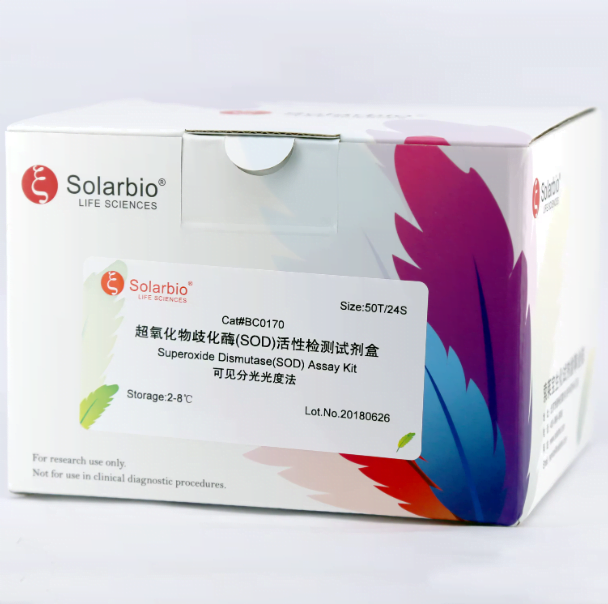
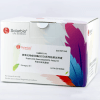
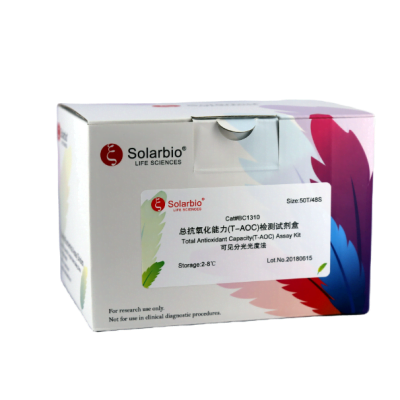
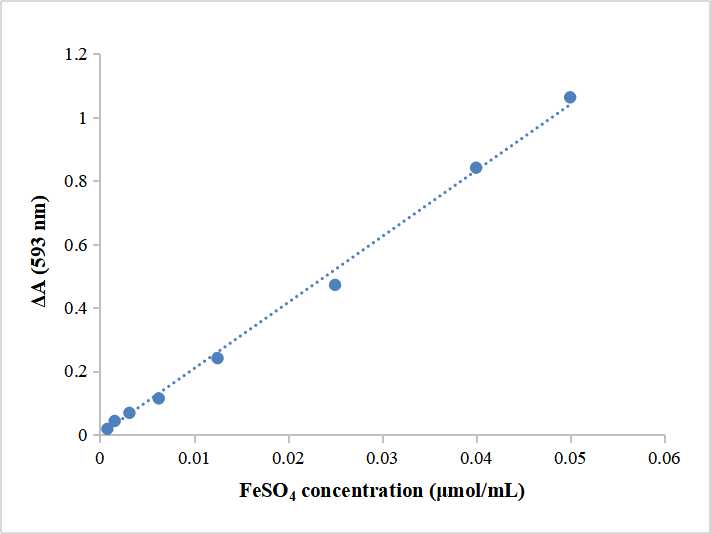
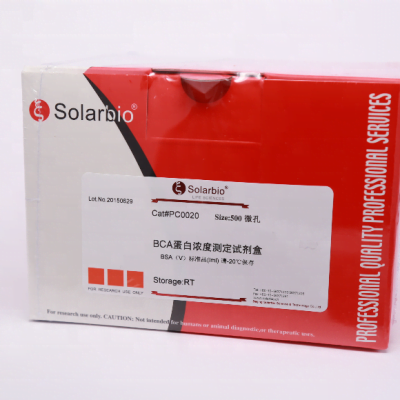

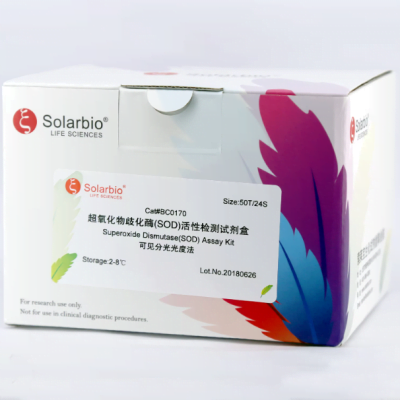
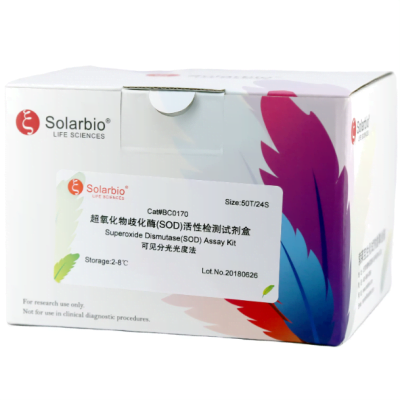
Bewertungen
Es gibt noch keine Bewertungen.